Hurricane Harvey has been horrifying. As a friend of many weather enthusiasts and Houstonians, my Facebook feed has been inundated with videos and pictures: first of driving 130+ mph winds and an ominous eyewall when Harvey made landfall as a Category 4 hurricane, then of catastrophic flooding and mass rescue at barely recognizable locations in Houston. I am nervous for my stranded friends, stomach-sick for the thousands rescued from flooded homes, and generally heartbroken for a city that was my home for 4 years.
 Brays Bayou on Sunday, flooding an area where I spent a lot of time in college. Source: Houston Chronicle, chron.com
Brays Bayou on Sunday, flooding an area where I spent a lot of time in college. Source: Houston Chronicle, chron.com
It is important to understand that this tragedy was inevitable. Hurricanes and tropical storms happen on the Gulf Coast, and Houston has recently borne the brunt of Allison in 2001, Rita in 2005, and Ike in 2008. The city’s very development-friendly zoning policy resulted in an expansive urban sprawl with lots of impervious surfaces, which restrict rainwater absorption and runoff. The flooding problem is exacerbated by the natural geography of the greater Houston area: a very flat coastal plain laced with marshy bayous. To accommodate the runoff, Houston’s bayous have been dredged into deep concrete channels, meticulously engineered to push maximum runoff toward Galveston Bay. This drainage infrastructure was designed for a 100-year flood (13 inches of rain in 24 hours), but storms have met or exceeded this benchmark in each of the past three years, indicating that statistics significantly underestimated the region’s flood potential. For more information about Houston’s storm infrastructure dilemma, I highly recommend this article from the Houston Chronicle earlier this year that inadvertently predicted this catastrophe.
Brays Bayou last December, in the process of widening. Houston’s bayous are engineered to have a constant downward slope and a shape that minimizes friction and blockage potential. Source: Houston Chronicle, chron.com
Also important, the situation could have been much worse if not for the efficacy of warning agencies and emergency response. Harvey’s formation was predicted with confidence about 5 days before landfall, and the threat of excessive rain due to a stalling tropical depression was forecast with reasonably accurate rain totals (an impressive feat considering the lack of precedent). Houston’s mayor encouraged people to hunker down in their homes, which seems like the right call, especially comparing this storm’s death toll to that of Hurricane Rita when millions were instructed to evacuate. Social media has helped coordinate rescue efforts where emergency response units have been stretched thin, and you can hope that everyone has been accounted for. It may take several years to fully recover from this multi-billion dollar disaster, but I am optimistic that Houston will, leveraging insights from this and from past disasters to become a more resilient, vibrant city.

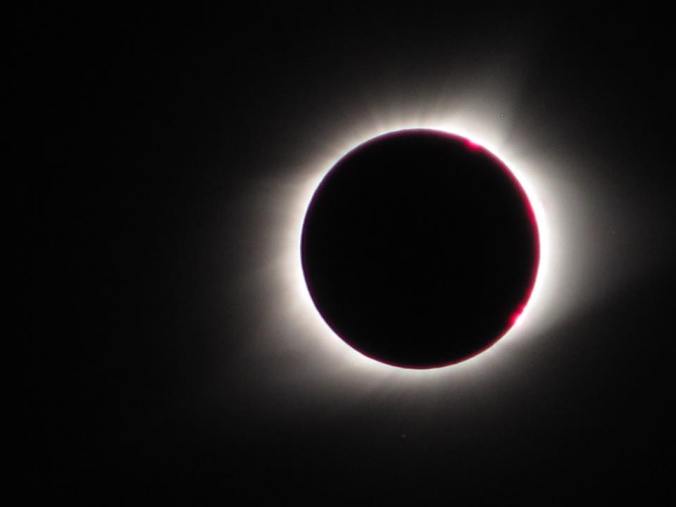 Photo credit: Mengya Li
Photo credit: Mengya Li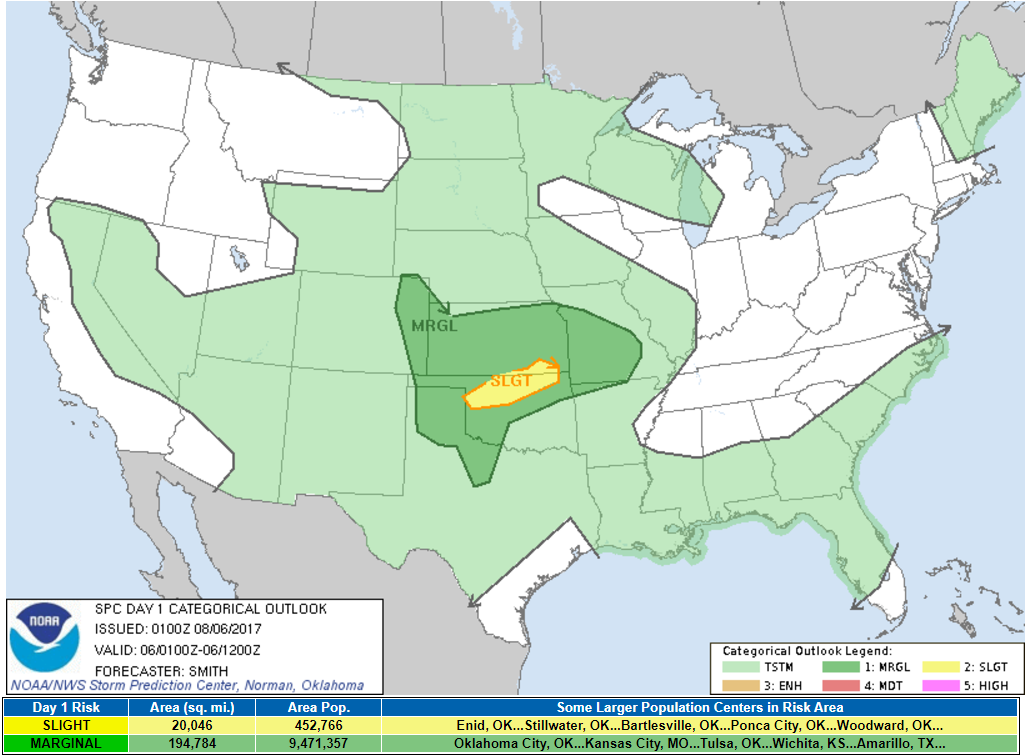
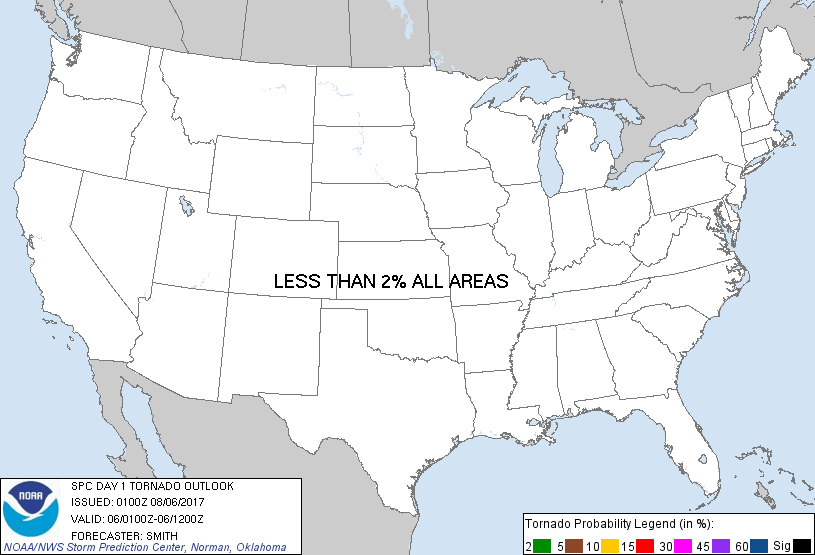 The SPC’s 8:00 PM CDT convective outlook shows a “slight” risk of damaging storms in northern OK (an even lower “marginal” risk in Tulsa), top. However, the latest tornado outlook, bottom, predicted minimal risk. Source: SPC, NOAA
The SPC’s 8:00 PM CDT convective outlook shows a “slight” risk of damaging storms in northern OK (an even lower “marginal” risk in Tulsa), top. However, the latest tornado outlook, bottom, predicted minimal risk. Source: SPC, NOAA The EF2 tornado touched down 4 miles SE of downtown Tulsa, tracked for about 7 miles, then lifted off briefly to reform as an EF1 tornado in Broken Arrow. Source: NWS
The EF2 tornado touched down 4 miles SE of downtown Tulsa, tracked for about 7 miles, then lifted off briefly to reform as an EF1 tornado in Broken Arrow. Source: NWS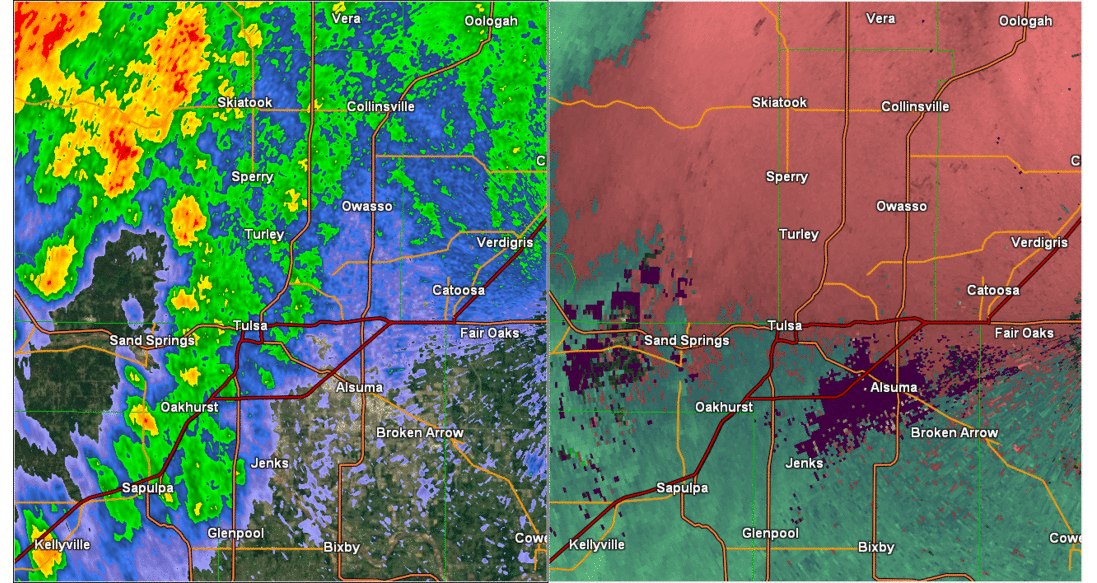 ENE-moving showers are overtaken by a squall line moving ESE at 55 mph, as shown by the reflectivity plot, left. The tornado shows up in bright green on the right panel (SRV), with droplets recorded moving up to 110 mph ~1000 feet above the ground.
ENE-moving showers are overtaken by a squall line moving ESE at 55 mph, as shown by the reflectivity plot, left. The tornado shows up in bright green on the right panel (SRV), with droplets recorded moving up to 110 mph ~1000 feet above the ground. The industrial area southwest of Tulsa, highlighted, is sheltered from WSW winds. Areas of elevated temperature and humidity are more likely to produce updrafts in a convective environment, and this buoyant “bubble” of warm, humid air is released when the wind shifts. The storm motion and damage path are depicted in red. While an updraft alone does not guarantee tornado formation, it certainly is a key ingredient in vortex generation.
The industrial area southwest of Tulsa, highlighted, is sheltered from WSW winds. Areas of elevated temperature and humidity are more likely to produce updrafts in a convective environment, and this buoyant “bubble” of warm, humid air is released when the wind shifts. The storm motion and damage path are depicted in red. While an updraft alone does not guarantee tornado formation, it certainly is a key ingredient in vortex generation.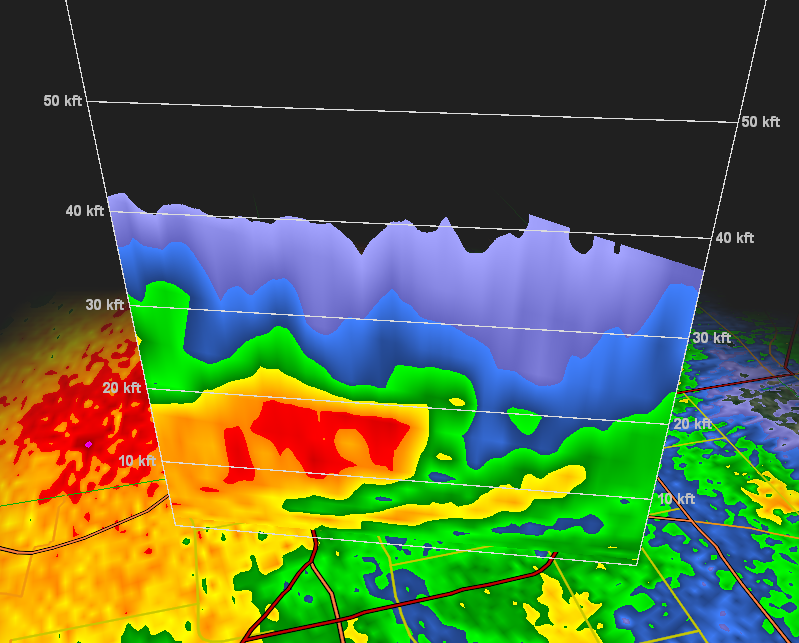 This cross-sectional radar snapshot ~3 minutes prior to touchdown includes an area of lower reflectivity just inside the leading edge of the storm, indicating a superheated updraft emanating from within the highlighted area of the map.
This cross-sectional radar snapshot ~3 minutes prior to touchdown includes an area of lower reflectivity just inside the leading edge of the storm, indicating a superheated updraft emanating from within the highlighted area of the map.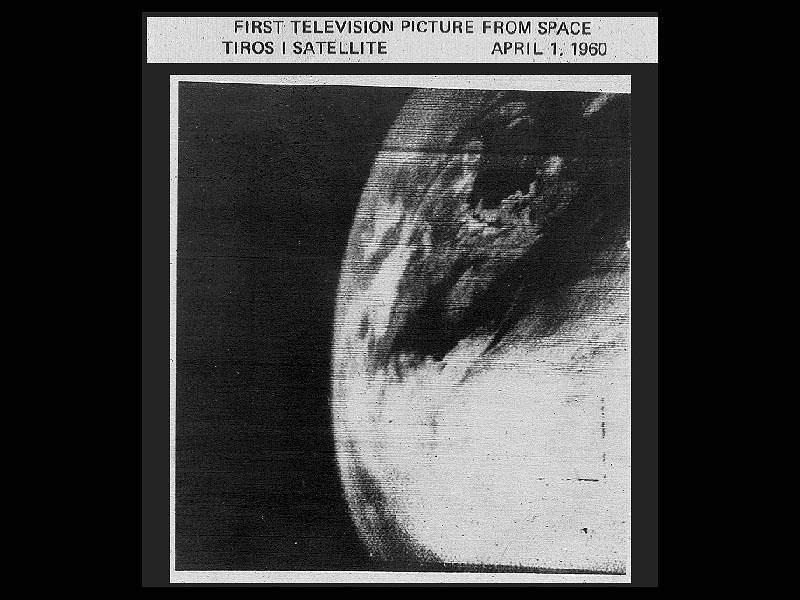
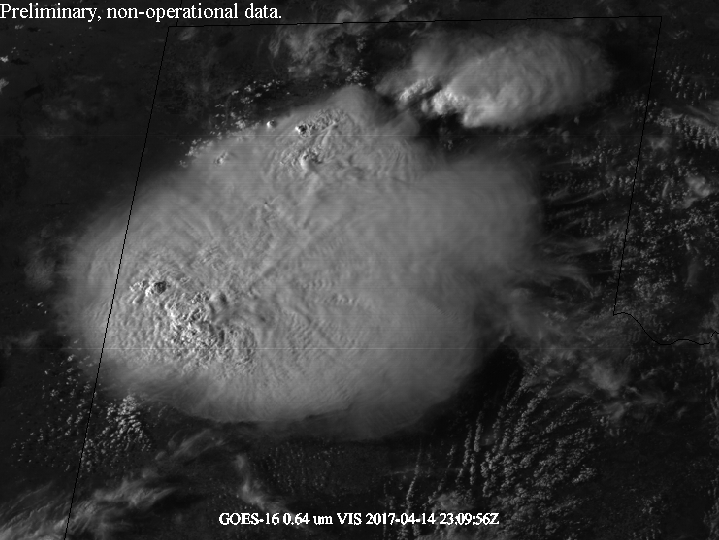 Reflectivity from cloud tops creates a high-resolution map of the storm. The “bubbling” areas are active supercell updrafts, and the outflow boundary extends over 150 miles across the Texas panhandle. Source: NOAA
Reflectivity from cloud tops creates a high-resolution map of the storm. The “bubbling” areas are active supercell updrafts, and the outflow boundary extends over 150 miles across the Texas panhandle. Source: NOAA Cross-section of a flow field representing an air bubble rising in water. Source: Meister and Rauch, 2015: “Modelling aerated flows with smooth particle hydrodynamics”
Cross-section of a flow field representing an air bubble rising in water. Source: Meister and Rauch, 2015: “Modelling aerated flows with smooth particle hydrodynamics”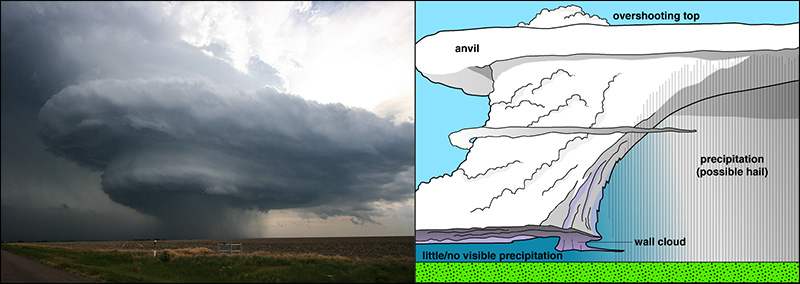 Supercell thunderstorm structure, as viewed from Earth. Source: National Severe Storms Laboratory (NSSL)
Supercell thunderstorm structure, as viewed from Earth. Source: National Severe Storms Laboratory (NSSL)